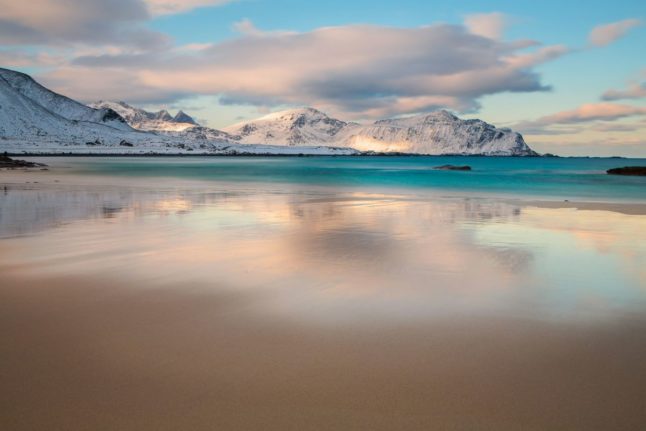Due to its mixture of vibrant cities and stunning natural beauty, Norway is an all-year-round destination, and tourists are attracted to all corners of the country.
However, not all countries with a booming tourism trade have a track record for being friendly or welcoming towards tourists.
Norway is generally welcoming to visitors from abroad. This contrasts with some countries, like France, where the locals have developed a reputation for being rude to tourists.
While reserved, Norwegians can be considered very polite and have high English language proficiency, meaning they are willing and able to help tourists.
Still, there are some areas of the country where tourists are less welcome and where the locals may be frustrated by the presence of tourists.
So, where aren’t tourists welcome, and why?
Tourists are generally less likely to be welcomed in more rural areas with a large influx of visitors. These include mountainous areas like the Lofoten region, cruise ports in Flåm or Geiranger, or nature spots like Trolltunga and Preikestolen (Pulpit Rock).
Some smaller cities have also seen locals push back against tourists, an example being Ålesund on the west coast of Norway, where many busses have caused issues at the city’s famous outlook point.
The reasons why tourists are disliked in some of these areas are a combination of factors, and over-tourism is the first.
READ ALSO: Are Norway’s top attractions at risk of over-tourism?
There is an argument to be made that too many tourists are visiting these locations, and there isn’t enough capacity for local services, or the sheer number of tourists is damaging the surrounding nature.
In recent years, there have been issues with roads and parking areas near Pulpit Rock due to congestion. Furthermore, the number of tourists who visit the site has been limited to prevent trails from becoming ruined.
For example, the cost of maintaining tourist trails could otherwise be spent on local health care or schools.
Concerns have also been raised that cruise ships are polluting Norway’s fjords. This led to the government adopting environmental legislation in 2018 to ensure that ferries and cruise ships would need to be environmentally friendly to sail in the UNESCO heritage fjords from 2026.
This degradation of nature naturally upsets locals living in the area as they don’t want to see such precious natural resources ruined.
Furthermore, many cruise ports are located in small villages and towns, meaning that during peak season, the tens of thousands of tourists easily outnumber the full-time residents.
Some places have seen posters urging cruise tourists to “go home.” However, locals’ anger is mainly directed towards cruise companies rather than tourists.
This issue isn’t entirely to blame on tourists, either. While they ultimately book the vacations, the travel industry sells the trips and contributes to local bottlenecks.
In some cases, local economies are dependent on tourism revenue and are unwilling to limit the number of visitors.
In the case of the UNESCO fjords threatened by pollution, local politicians had debated dropping the UNESCO title to ensure cruise ships can still get into the Geirangerfjord and Nærøyfjord to protect the local economy.
In some cases, though, it’s the actions of tourists that also contribute to their bad reputation. Illegal parking and poor driving in Lofoten, primarily by tourists, led to the local authorities cracking down.
Hefty fines of 900 kroner were implemented to try and curb the issues with foreign drivers.
Some tourists also take Norway’s nature and laws making it accessible for granted. Littering and people leaving behind human waste have been issues at camping locations and on mountain trails for years.
People mistaking the public right of access rules in Norway to camp where they shouldn’t be has also caused problems.
Another issue has been ill-prepared tourists trying to tackle some of the tougher-to-access nature spots without proper gear or preparation.
When they inevitably need rescuing, locals are left annoyed as it wastes resources that could be better used elsewhere.
Essentially, these issues are due to pure carelessness and a lack of respect for the locals and their surroundings.
Some also resent that some tourists pay vast sums to travel firms but want to avoid spending money locally.
What can be done about this?
In some cases, it can be a case of tourists just ensuring they behave themselves in the hope they can contribute to a changing narrative in these areas.
Travelling out of season can also prevent the bottlenecks that threaten nature and disrupt the lives of locals. This also means fewer crowds and queues for you.
In some cases, this isn’t possible; for example, many mountains are closed during the winter for safety reasons.
In other cases, it’s more about what local authorities and the government can do.
Several areas affected by over-tourism have expressed an interest in trialling a long-proposed tourist tax. They argue that tourists contributing to the maintenance of paths and trails would take a significant burden off the local authorities that are left to foot the bill.
Some businesses can also take individual action. Fjellstua, one of Ålesund’s most popular attractions, has introduced gates to prevent overcrowding and vandalism.



 Please whitelist us to continue reading.
Please whitelist us to continue reading.
Member comments